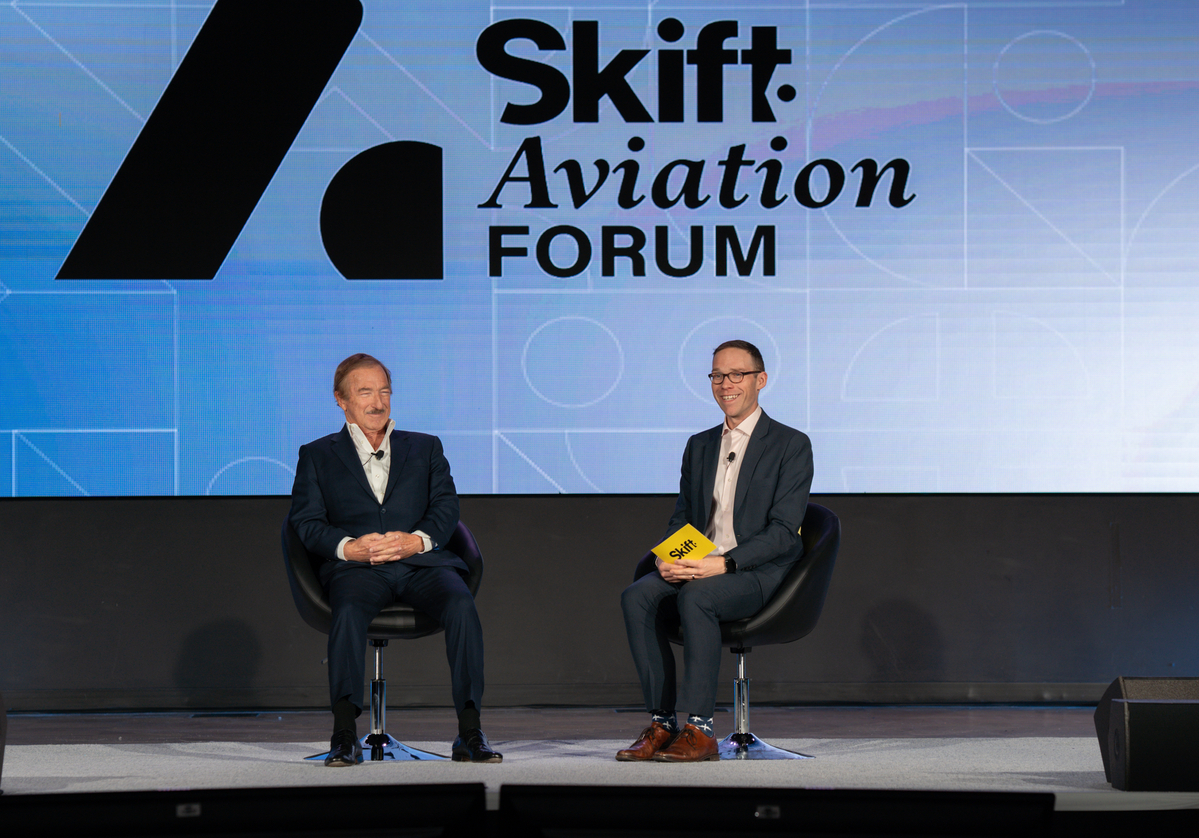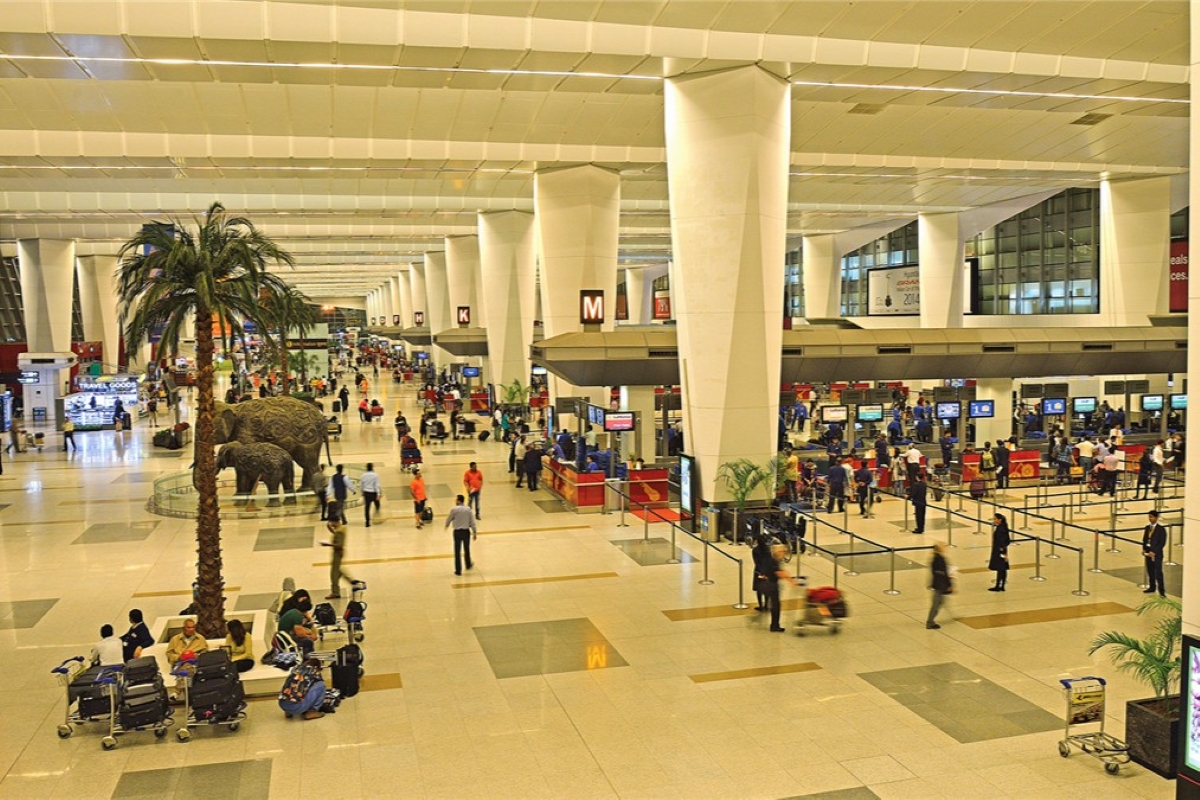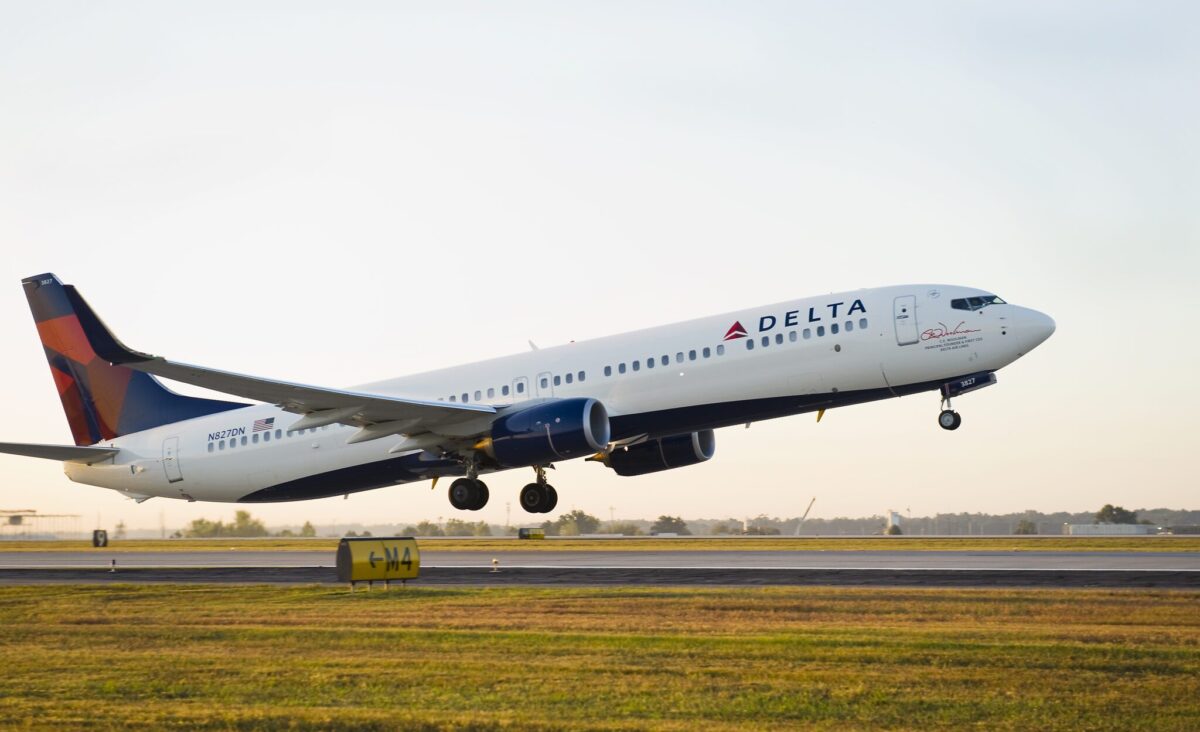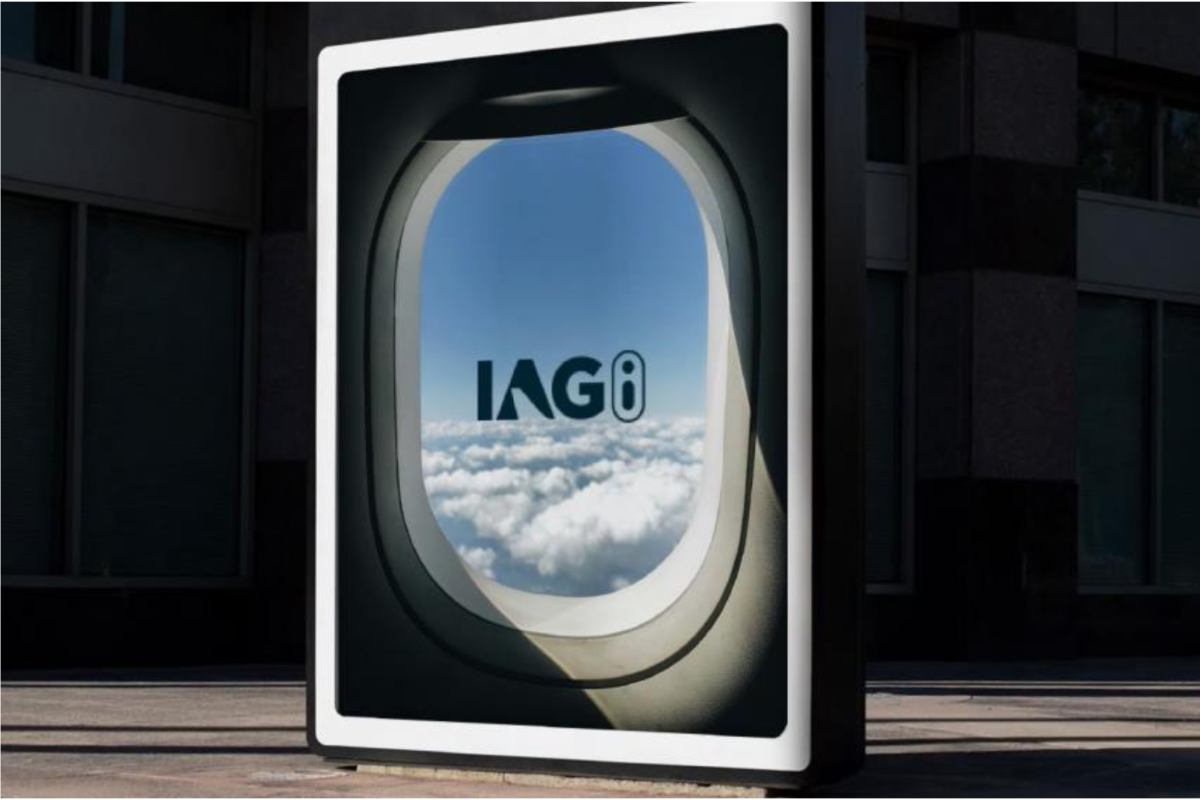Full Video: Air Lease Executive Chairman Udvar-Házy at Skift Aviation Forum 2022

Skift Take
Steven Udvar-Házy, the co-founder and executive chairman of lessor Air Lease Corporation, believes the airline industry will likely see more consolidation, especially in Europe. Udvar-Házy said at the recent Skift Aviation Forum in Dallas that while he doubts the continent's low-cost carriers will be involved in any mergers, he sees Italy’s ITA and TAP Air Portugal as takeover targets.
Udvar-Hazy also touched on how airlines are coping with surging travel demand, challenges in delivering aircraft on time as well as the state of the growing electric air taxi market.
Watch Udvar-Hazy’s full on-stage interview with Airline Weekly editor Edward Russell, as well as read a transcript of it, below.
Full Transcript
Edward Russell: Good, almost afternoon everybody. Happy to be back on stage. Before I kick off with my guests, Mr. Steven Udvar-Hazy, who almost needs no introduction, I just want to say if you have any questions, please submit them in the app or online and we'll be able to see them up here in the last five minutes of the session. But as I said, I am here with Mr. Steven Udvar-Hazy, Executive Chairman of Air Lease Corp, widely known, accredited as the father of the modern leasing industry, who famously started out of his car in Santa Monica in the 1970s. Welcome to the stage.
Steven Udvar-Házy: Thank you very much, Ed.
Russell: Well, Mr. Hazy, in your work at Air Lease, you talk to airlines around the world, you get a lot of different perspectives. We had American Airlines CEO Robert Isom up here earlier talking about demands remaining robust despite the concerns. What are you hearing from airlines right now? How do things look?
Udvar-Házy: Well, I think we have about 140 airlines that lease jet aircraft from us on all continents. We're in 85 countries, so I can second what Robert said. I think the airlines grossly underestimated the resurgence and demand as the pandemic died out in the early part of this year. Most airlines were not equipped in terms of infrastructure, labor, pilots, ground agents, maintenance facilities to cope with this tremendous increase in demand. So we saw big gaps in the ability of airlines of recover and get back to some level of normalcy. Some have done better than others. But the U.S. ... obviously we have a lot of media attention to the issues and flight cancellations and (air traffic control) problems. Now of course, we have labor flexing their muscles as airlines are making profits. They want to recover what they've given up in the last three, four years. So it's normal human behavior.
Russell: Absolutely. I think there was a lot of press recently about Delta pilots and how it could disrupt holiday travel though the process takes more than just a strike vote. So it's a negotiating ploy for all intents and purposes. So the U.S. is good. In Europe, of course the pressure from high energy prices is a lot more severe than it is here and everything. Are you hearing from airlines there any concerns about pulling back or anything?
Udvar-Házy: Well, I think Europe had a very strong recovery starting late last year. And what surprised the airlines is the discretionary travel, particularly to southern Europe, the Mediterranean region was extremely strong. It already surpassed 2019 traffic volume levels. But on the other side of the equation, business travel between business hubs like between say London and Brussels or Copenhagen and Paris, were significantly below previous levels. So the whole market dynamic and distribution where the traffic flows are were sort of unprecedented.
Russell: I mean you mentioned Southern Europe. I read about Aegean Airlines third quarter results and they're one of those profitable airlines in Europe because everyone wants to go to Greece apparently.
Udvar-Házy: Yeah. Greece did very well. As a country they were in bad shape five, six years ago and made tremendous recovery. But I think Portugal, Spain, Italy, Greece, enjoyed robust traffic increases, and had some degree of difficulty keeping up with hotels and ground arrangements to accommodate all these travelers.
Russell: And that's always the problem as we know. The travel industry, it's not just getting there, it's your entire trip. One market that is not yet as fully back as Europe and the U.S. is Asia-Pacific. We talked a little about China — (it's) such a big piece of that. Of course, China's borders remain closed. What is your view of what's happening there and where that's going to go? Is it going to follow the same track or something different?
Udvar-Házy: Well, there's an immense contrast between what happened on the North Atlantic this year where I think both traffic levels and yields far exceeded airlines expectations compared to North Pacific, and then long-haul traffic to and from Asia. A lot of this is really due to the lockdowns, travel restrictions, quarantines, limitations on quotas and how many passengers can come in and out of airports. So Japan, Korea, Taiwan, Singapore, Malaysia, Thailand, they were all very slow — kind of behind the power curve —on recovering because they were all scared of another wave of a new form of Covid.
Russell: Right. And now they seem to be opening up. Japan, Taiwan have all dropped their entry restriction, except China. But they seem to be embracing the return of travelers this winter.
Udvar-Házy: And they are. They are because I think it had a very negative impact on their overall economies. Particularly Southeast Asia, tourism is such an important part of the (gross domestic product).
Russell: Right, right
Udvar-Házy: Like in Indonesia, Thailand, good examples to that.
Russell: Yeah, Thai AirAsia just said they're expecting tourism numbers hit 10 million for the year, after, I mean, they're less than half a million at the beginning of the year. So it's crazy. The rebound is impressive, but it's still not back to 2019, that's for sure.
Udvar-Házy: No. So it's going to take a little longer, but I think the middle class is growing. I think people are eager to travel, and I think governments will come around. It's just they're a little bit behind at times.
Russell: Definitely. So one topic that has come up across the airline industry is consolidation. Now it's always been, generally, it's viewed that larger airlines are more profitable. They have better pricing power, they can grow more. We've seen that in the U.S., but talks have sort of restarted pretty quickly in Latin America. Now in Europe we're hearing all these potential deals. What's your view of consolidation now? Is it actually going to happen now?
Udvar-Házy: Well, there's already been a lot of consolidation. First, let's talk about Europe. You've got the IAG Group that already includes Air Lingus in Ireland, the British Airways, Iberia, Vueling. And then a very strong foundation for the One World Alliance. Then you've got the Air France-KLM Group, and then Lufthansa Group that already controls Brussels Airlines, Austrian and Swiss. So those are the three pillars of European consolidation. Then you have the large (low-cost carriers) and (ultra low-cost carriers), RyanAir, EasyJet, Wiz and Vueling, being the largest. And Norwegian trying to get back into that category.
I don't really see a lot of consolidation among the (ultra low-cost carriers) at this point because the egos are pretty strong. But there are airlines in play. I mean, eventually SAS might be a candidate. ITA, which is the successor to Alitalia. There are initiatives from both Lufthansa and from Air France-KLM to take a strategic position in ITA. And then you've got TAP Air Portugal. I would say those are the main targets right now for potential consolidation.
South America, there's cultural issues there. For example, the LAN taking TAM in Brazil, it's been an imperfect merger and they've gone through a very expensive bankruptcy restructuring process. The company will emerge better, but it's still not an optimal situation.
Russell: Interesting. That raises, at least in Latin America, we're going to hear from John Rodgerson, the CEO of Azul later today. But cross-border consolidation, like you said, has not always met the expectations that people have for it. In Europe, it's arguably been more successful. Is that just because Latin America is still essentially a collection of 10, 15 different markets?
Udvar-Házy: Yeah, and there's political considerations because a lot of these countries want to have a flag carrier and they don't want to have domination from outside the country. To give you an example, Peru, which is the largest on the West Coast, does not have a flight carrier. They used to have a flight carrier, but now it's essentially foreign airlines that dominate the Peruvian landscape. But I was just recently down at ALTA in Buenos Aires, met with all of our Latin American CEO airline clients. Right now I think Latin America has got the best traffic growth across the board of any region.
Russell: Yeah, to that point, I mean they've recovered sort of the fastest in terms of traffic so far in the pandemic, I think in the latest numbers I saw, which were for August. People are definitely back though. I do note that when I was also at ALTA, a lot of the CEOs felt that they weren't confident predicting beyond the current booking window, which is still 90 days out.
Udvar-Házy: But the results have been really impressive. And Mexico kind of came out of the blocks first even ahead of the U.S. and Canada. If you look at the traffic data at Viva Aerobus, Volaris, Aeroméxico, I mean the rate of recovery was just unbelievable.
Russell: Absolutely. I mean they lost a player early on Interjet. Volaris has grown leaps and bounds. Aeroméxico out of Chapter 11 is larger than it was going in. It's impressive.
Udvar-Házy: So we've put a lot of A321 Neos at Volaris. They can't get enough of them. We've done a lot of 737-9s at Aeroméxico to cope with this huge traffic increase.
Russell: Definitely. So speaking of airplanes, you of course deal with them every day. What are you seeing in the aircraft market right now? We saw a lot of narrow body interest early in the pandemic. I've heard that wide bodies are gaining interest again. What trends are you seeing in the market right now?
Udvar-Házy: Well, both Boeing and Airbus substantially reduced their production output in addition to the fact that the 737s were grounded and 737 max production came to halt. And then 787 production was basically nonexistent for about 18,19 months. But I think right now we're seeing demand is very strong, particularly for the larger single aisle aircraft. Airbus just can't keep up with demand on the A321 Neo.
Russell: Do you think we'll get the MAX 10 certification anytime soon?
Udvar-Házy: That's up to the (Federal Aviation Administration) and YASA, but that's a little more complicated in terms of systems and aerodynamics than the 737-7. So I think the (737-7), which is a baby brother of the (737-8), is going to be a little more straightforward. The (737-10) has some other complexities.
Russell: (737-10) is a little larger than the current 900 ERs, whereas the (737-7) fits within the current-
Udvar-Házy: Right. The (737-7) is roughly the size of a 737-400. It's kind of between the 700 and the 800 fuselage size. But it's basically the same platform, the same engines, the same systems. So you would think that would be pretty straightforward. And Southwest is certainly making a strong case in Washington.
Russell: They've ordered how many hundreds of them at this point?
Udvar-Házy: I think 500 something. Yeah. (737-10) is having a rougher time. They haven't had a lot of orders outside of North America. They've lost most of their sales campaigns against the A321 Neo. But look, Boeing has to be in that market. They can't give up more market share. It's already close to 60/40, and at the rate things are going, it's going to be low 60s to high 30s. So it's very much favoring Airbus, which is not an ideal situation for the airlines and the customers. You want to have a reasonable equilibrium right between these two giants.
Russell: Well, and it has potential to only get worse because of Boeing CEO, (Dave) Calhoun, mentioned the other week that they're not considering a new aircraft until the next decade.
Udvar-Házy: Well, I think there's several reasons for that. One is that it's very difficult to forecast the impact of new technologies and the feasibility and economics of these new technologies, whether it's electric or hydrogen when you go out to say 2035 and beyond. So why would a company invest today 15 to 20 billion to develop an airplane that's essentially today's technology with maybe a few percentage points improvement in fuel and environmental economics. But then that's offset by the high capital cost. So there's not a meaningful step change improvement achievable with the current platforms that are out there today.
Russell: And that was the challenge that we saw with part of the challenge with the MMA. They were looking at today's technology in an airplane that would be flying and for the next, if it had come out, in the next 30 years, well into the 2050s, 2060s. Sorry for (the) audience, the MMA is the new mid-market airplane.
Udvar-Házy: We called it the 797. It was never built.
Russell: Yes, Boeing was considering it, and then Calhoun canceled it early in his tenure. So what are you seeing on the wide body side?
Udvar-Házy: Well, the wide body market took a much bigger hit because of the pandemic. And A330 Neo production was down to one, one and a half a month. As I said, 787 production went from 10, it was supposed to go to 14, then dropped down to zero. 777X is like five years delayed. 747 passenger production stopped. 777 freighter is still doing well, and it's keeping the 777 line going until the X comes along. They're not building any more 777-300ER passenger aircraft, which has been a very successful product. So that's come to an end.
So Boeing's got to refocus on the 787,9,10. And get the 7779X certified, which is a huge challenge. It's got a huge cost overruns. My guess is they'll probably lose money in every airplane because of the (research and development) and the cost of keeping that program alive. The fact that they have to stop escalation, airlines are not going to pay escalation for those delays.
Russell: Then there's also the question with the (7779X). It's not a composite aircraft. Will it be competitive in terms of weight with the A351000? Which maybe not exactly the same size, but they're close.
Udvar-Házy: The advantage Boeing has there is that there's such a large embedded fleet of 777s and 787s. So it's easy for an airline to transition to a 777X. But it's a very expensive airplane cost per seat. The engine, we still have to see how reliable the engine is compared to the G90.
Russell: Definitely.
Udvar-Házy: Boeing has their work cut out.
Russell: They absolutely do. But Boeing's not alone. We heard a little bit from Robert Isom earlier about the delivery constraints, and those are issues at Airbus too. I mean, what's happening there on the supply chain side?
Udvar-Házy: Yeah, every plane last year and this year is delayed. We haven't gotten one airplane on time, whether it's a 737 MAX or a 787 or an A330, A350. And the worst has been the A321neo in Hamburg, Germany. We've had delays as much as six or seven months comparing contract delivery month to actual delivery. It's a combination of supply chain issues, ramping up too quickly, shortage of labor. Production workers can't work from home. So it's been a real problem. And we've also had engine shortages where both Pratt & Whitney can't deliver enough (geared turbofans) to Airbus. CFM cannot deliver enough leap engines to Boeing and Airbus. So we've had gliders sitting at the final assembly plants without engines.
Russell: Which is crazy. Gliders being...
Udvar-Házy: Without engines.
Russell: Right. Which you almost never see.
Udvar-Hazy: Yeah. So these are problems that have really become acute. And airplanes that we're supposed to deliver in the springtime for a high summer season now deliver in November. So it's not an optimal situation for our customers.
Russell: Absolutely not. Do you see the issues easing in the near future or are they already easing?
Udvar-Hazy: No, no. I think they'll get worse before they get better.
Russell: Oh wow. So we're looking easily 2023, 2024 before-
Udvar-Hazy: Yeah, and one of the reasons is that both Boeing and Airbus are... Well, Boeing is trying to get to a steady 31 a month on the 737, and Airbus is progressively increasing production rates. And a lot of the suppliers, not just first tier, but second, third tier suppliers are already at their maximum production output levels. So we're having some concerns whether the (original equipment manufacturers) can meet their production targets.
Russell: Definitely. While it is a concern, it also is benefiting yields because capacity of artificially constrained and airlines. And that's a global situation right now. All right, we've got a couple audience questions here while we're talking about Boeing. So efficiency, every next gen aircraft is 20 percent more efficient than previous generations. Are you finding that airlines are going more and more for newer aircraft from a sustainability point of view than...? Yeah.
Udvar-Házy: Look, it's been very difficult to follow this rollercoaster on oil prices if you go back the last 10 years. I remember when Goldman Sachs was predicting $150 a barrel. Then it got down to 40, and now it's like around 91. And so fuel cost is one of the most important and largest cost components for an airline. So every airline is seeking fuel efficiency in the long term. So 20 percent is a very significant number, but that's offset by the higher capital cost of new planes. The fact that the reliability of the new engines on all of these new products has not been at the same level as the previous generation engines. So engine maintenance costs are running much higher and they offset a large part of the fuel savings.
Russell: Then you have the constraints we just talked about in terms of supply chain, that if an airline wants to recover its capacity, it maybe needs to keep some of its older planes around to do that than it otherwise would have.
Udvar-Házy: A good example that is that historically 60 percent of our leases are extended by the first operator. Now we're running at 93, 94 percent extension rate because airlines don't have the confidence that they'll get their new deliveries on time. So they want to protect their network and extend leases 1, 2, 3, 4 years on existing A320S, 737s, 777s, A330s. That's sort of helping stabilize the market equilibrium for used aircraft as well.
Russell: I mean, that's good. We were seeing a lot of used aircraft early in the pandemic and now it's-
Udvar-Házy: They've been absorbed. The good ones have been absorbed.
Russell: Good, good. I mean that's good for you guys and stuff that your remarketing team must be not have much work to do at the moment.
Udvar-Házy: Well, they're selling some of these older assets. And then we've also had a huge amount of activity in converting passenger aircraft to cargo. For example, the 737-800, the older ones that are more than 10, 12 years old, a lot of them are getting converted. A321s are being converted. A330s are being converted. 777 conversions are about to get underway. 767-300 ER conversions. So a lot of these used aircraft found the second lease of on their lives through the cargo market, which of course had this tremendous level of activity when all the large wide bodies were basically not flying anywhere near where they were before.
Russell: I think we had a popular term that was coined then was preters, where airlines would pull the seats out, but otherwise leave it in a passenger layout and fill it with cargo.
Udvar-Házy: I don't think most people understand that the majority of air freight flies in the belly of passenger aircraft. So when we had this huge compression of wide body flying during the pandemic, the all cargo aircraft and the aircraft there were sort of semi-passenger, semi-cargo airplanes, took on the load. And so that gave that segment of the market a tremendous boost.
Russell: Definitely. So one segment that's emerging that we haven't talked about are the electric vertical takeoff and landing aircraft. There's lots of (memorandum of understandings) and commitments by airlines for hundreds of them out there. I want to be clear that they are not a solution to replace current flying. They create a new market, urban air mobility, getting someone from, we're sitting here in downtown Dallas to (Dallas-Fort Worth International Airport), for example. What are your thoughts of the eVTOL market?
Udvar-Házy: Well, they're laboratories for new technologies. So it kind of reminds me of the U.S. automobile industry in the 1920s where you had hundreds of companies building cars, and then most of them either went bankrupt or there was consolidation. So it's very difficult to forecast which of these companies that have raised billions and billions of dollars of money will actually succeed and be economically sustainable.
We highly respect what they're trying to do. It's attacking a segment of the market that has not existed before. And as Robert Isom indicated, one of the key challenges will be the air traffic control at low altitudes and in bad weather. Our (air traffic control) system is not equipped to handle this high density urban flying at low altitudes. We just don't have the infrastructure to deal with that.
Russell: Absolutely. And we have air traffic control staffing as it is when major metro areas ...
Udvar-Házy: Exactly.
Russell: ...For the current planes we have, let alone adding every 10 eVTOL flights.
Udvar-Házy: And then a lot of these companies want to then transition to autonomous vehicles. In other words, initially they'll have a pilot, but they're all being designed to eventually become autonomous. So that's another big question. Who really controls those airplanes from the ground? What are the qualifications they'll need? Certainly several steps above just flying a drone. And then again, this interface with the (air traffic control) system and dealing with high energy electric wires that could become fatal to these smaller vehicles. So there's a lot of challenges, but I commend all of the quest for new technology, both hydrogen and electric. But it's going to take a few decades to have applications on what I call the mainline airline segment of the industry.
Russell: Right, absolutely. I know you've spoken before, batteries are just not a feasible solution for a long-haul aircraft. They just don't have the energy density. And maybe hydrogen-
Udvar-Házy: Weight.
Russell: Weight, exactly.
Udvar-Házy: In a car, if you have another 500 pounds of batteries, you can make it work because you can design lighter structure of the automobile. But aviation, weight is the enemy. And the more weight you have, the more power you need. So it's kind of chasing your own tail. It's a difficult solution.
Russell: Definitely. It's going to take some work. Now on new eVTOLs, I have to ask. Air lease has not jumped into the race for eVTOLs yet. Are you guys looking at buying some or?
Udvar-Házy: No. It's a beauty contest where we have 100 contestants and we have trouble picking the winner and the runner up. So we're watching the movie carefully.
Russell: That's a good place to be. Let the market sort itself out and then you can sweep it.
Udvar-Házy: Plus we would not get any revenue from any of those for a long time. And one of the issues for a capital investment company like us that we buy billions of dollars of aircraft every year is, what is the residual value of one of these products five years after it was built? Right now, commercial aircraft have a life of at least 25 years, and if they're converted to cargo, it could go to 35 years. What's the useful life of one of these little ...
Russell: eVOLTs.
Udvar-Házy: eVOLTs?
Russell: We don't know.
Udvar-Házy: And will they be obsolete in three to five years because there'll be new, better technologies and efficiencies?
Russell: Better batteries, maybe larger aircraft instead of forepath.
Udvar-Házy: We'll let other more adventurous investors deal with that.
Russell: That sounds good. Well, Mr. Hazy, it's been a pleasure to have you here at Skift Aviation Forum. We welcome your depth of knowledge in the aviation industry here and stuff. So thank you.
Udvar-Házy: Thank you very much.
Russell: Thank you so much.





